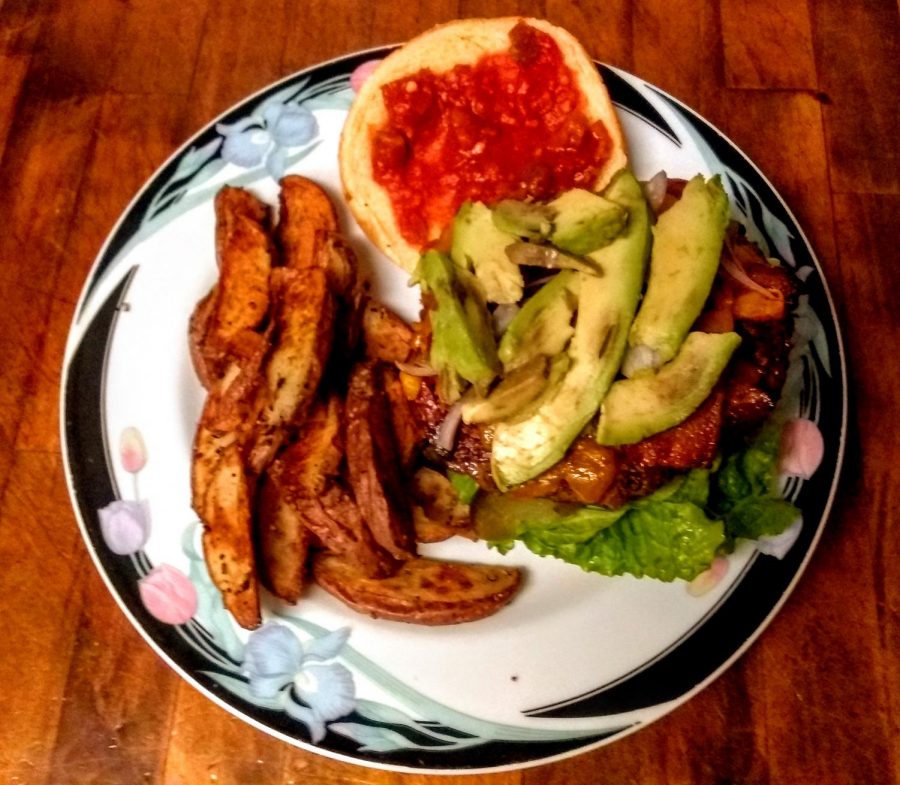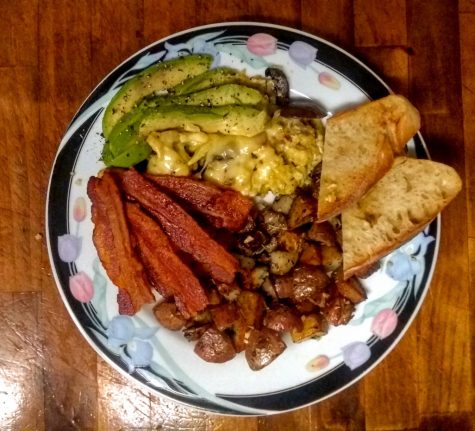March 31 is a day dedicated to one of my favorite foods: potatoes. National Tater Day celebrates the starchy spud, and whether you prefer reds, purples, whites or goldens, a plethora of methods can enhance many dishes using potatoes.

Yes, potatoes are magical. They’ve kept millions from starvation and help facilitate a great practical joke when put in a car’s tailpipe. But what the heck is a potato?
Native to the Peruvian-Bolivian Andes Mountain region, potatoes are a tuber root of Solanum tuberosum, an annual in the nightshade family. Though the plant’s berries are poisonous, the tubers are rich in nutrients like vitamin C, protein, thiamin and niacin.
As a starchy food, potatoes have the ability to adapt to any flavor pairing. They can be salty (fries), hardy (baked, with butter) or savory (potato pancakes). Are you gluten-free, but still want to thicken up a sauce? Potatoes have you covered — they can be ground into a flour.
Growing potatoes is easy. The buds, or “eyes,” sprout into clones that grow year-round, as long as soil temperature remains above 40 F.
Remember: It’s easy to undercook potatoes, but you typically have to work to overcook them.
Let’s cook.
Baked Potatoes
First off, don’t cover them in tinfoil. Trapping in the moisture makes them steamed potatoes, not baked. Cover them in oil, salt and pepper, poke some holes in the skin with a fork, and bake at 350 F for 40 minutes, flipping halfway through. Overcooking isn’t really an issue here, so they can keep going for another 20-30 minutes. For this reason it can be advantageous to start cooking them first. It’s a true no-brainer food.
To peel, or not to peel? That’s a silly question. I never peel my potatoes! The skin contains nutrients, and who doesn’t like a crispy skin? Especially in mashed potatoes, the skin makes the meal.
Mashed Potatoes
Wash the potatoes and cut them into similarly-sized 1–2-inch chunks — the more even the size, the more evenly they’ll cook. Put them in a pot and cover with water. Don’t go overboard, the water just needs to top off the highest chunks.
Salt the water thoroughly and bring it to a fast boil. Turn the heat down to medium so the water will continue to boil — but not boil over — for about seven minutes. Using a fork, poke a chunk and extract it from the water. If it stays on the fork, it’s not quite done. If it slides right off, remove the pot from the heat and drain. You can reserve some of the water to thicken a sauce, as it’s now starchy.
Mash the potatoes to your preference. I like chunky mashed potatoes which, with the skin on, technically makes them smashed potatoes. Add butter and milk, but only a little at a time. Too much butter makes the potatoes too rich, and too much milk makes them soupy. Add salt and pepper to taste, plus whatever herbs you like. I typically add rosemary, oregano and garlic.
Potatoes? For breakfast?? You betcha. Breakfast potatoes are fantastic with scrambled eggs and bacon, and the sugars from the starch provide a good zip to start the day.
Breakfast Potatoes

After washing the potatoes, cut them into ½-1-inch chunks. Heat up a pan on medium high and add oil. Once the oil’s hot, add the potatoes and salt them. The goal is to get all sides of the chunks a nice, deep golden-brown color.
Next, reduce the heat to low and cover. Frying the chunks crisps the outside, but covering them on low heat steams them from the outside in. Cook them on low for about 40 minutes. I use the extra time to chop rosemary and garlic, adding both when they’re ready. Serve hot.
In my opinion, the list of potato downsides is quite short. Unfortunately, they don’t keep well once cooked. They’re also somewhat high in calories, so they shouldn’t be a staple in every meal. I’m hard-pressed to think of another disadvantage.
I’m eager for you to explore the world of potatoes, whatever the meal of the day and however you prepare them. Potato on, my friends, and happy National Tater Day!
Ian Hilton can be reached at orionmanagingeditor@gmail.com.





